This article was medically reviewed by Jonas DeMuro, MD. Dr. DeMuro is a board certified Pediatric Critical Care Surgeon in New York. He received his MD from Stony Brook University School of Medicine in 1996. He completed his fellowship in Surgical Critical Care at North Shore-Long Island Jewish Health System and was a previous American College of Surgeons (ACS) Fellow.
There are 31 references cited in this article, which can be found at the bottom of the page.
wikiHow marks an article as reader-approved once it receives enough positive feedback. In this case, 96% of readers who voted found the article helpful, earning it our reader-approved status.
This article has been viewed 110,626 times.
Your collarbone, also called the clavicle, is a long, thin bone near the base of the front of your neck that connects your breastbone (sternum) and your shoulder girdle.[1] Humans have two collarbones: right and left ones.[2] A broken (fractured) collarbone is a relatively common injury, particularly in children and young adults, because the bone doesn't completely harden until adulthood (about the age of 20). Common causes of collarbone fractures include falls, sports injuries, and trauma from motor vehicle accidents.[3] A broken collarbone needs prompt medical attention to determine the severity and any related complications, although most cases heal well with rest, using a sling, applying cold therapy, taking pain relievers, and getting some form of physical therapy can help the healing process.
Steps
Seeking Emergency Medical Attention
-
1See a doctor as soon as you can. If you experience significant trauma from a fall or car accident and feel severe pain — especially in conjunction with a cracking sound — then head to the nearest hospital or walk-in clinic for medical assessment. A broken collarbone causes intense pain near the shoulder and top part of the chest, and disables most upper arm movements, especially those involving arm raising and reaching. Other signs and symptoms include bruising, swelling, and/or bulging over the fracture site, a grinding noise and pain with arm movements and sometimes numbness and/or tingling in the hand.[4]
- X-rays, bone scans and MRI are tools that physicians use to help diagnose the location and severity of fractures — small hairline fractures of the collarbone may not show up on x-ray until the inflammation calms down (up to a week or so).[5]
- If your broken collarbone is considered complicated — there are many fragments, the overlaying skin is penetrated and/or the pieces are grossly misaligned — then surgery will be needed. Only five to 10% of clavicle fractures require surgery.[6]
- Collarbones usually break directly in the middle, and much less commonly where they attach at the breast bone or shoulder blades.[7]
-
2Get an arm sling or support. Broken collarbones are not casted because of their anatomical position — it's impossible to immobilize the bone or general area with a plaster cast. Instead, a simple arm sling or "figure-of-eight" wrap or splint is usually used for support and comfort immediately after a collarbone break.[8] A figure-of-eight splint wraps around both shoulders and the base of the neck to help support the injured side and keep it positioned up and back. Sometimes a larger swath is wrapped around the sling to hold it closer to the torso. You'll need to wear the sling or support at all times until there is no further pain with movement — usually takes two to four weeks for kids and four to eight weeks for adults.[9]
- You'll receive an arm sling or support if you go to the hospital or emergency walk-in clinic, although they're also available at most pharmacies and medical supply stores.
- Slings come in all sizes, including ones appropriate for small children, as the collarbone is the most commonly broken bone in kids — usually the result of falling onto an outstretched arm.
Advertisement -
3Take pain pills short-term. Your doctor will likely recommend non-steroidal anti-inflammatories (NSAIDs) such as ibuprofen, naproxen or aspirin as a short-term solution to help you deal with the pain and inflammation related to your broken collarbone. Alternatively, you may be given painkillers, such as acetaminophen (Tylenol), or prescribed opioids (like Vicodin). [10] Keep in mind that these medications can be hard on your stomach, kidneys and liver, so it's best not to use them continuously for much more than a couple of weeks.[11] Opioids can be addictive, so use them exactly as your doctor prescribes.[12]
- Kids younger than 18 years should never take or be given aspirin, as it’s associated with life-threatening Reye’s syndrome.[13]
- For more serious fractures that generate severe pain, your doctor may give you a prescription for more powerful drugs while at the hospital, such as morphine-like opiates, but be aware that they can be habit-forming and lead to addiction if abused.
Managing a Fractured Collarbone at Home
-
1Rest your injured collarbone and apply ice. Once you're discharged from the hospital or clinic, you'll be told to rest your arm and apply ice to the injury while the arm sling or splint is on in order to help decrease the swelling and numb the pain. On the first day following your fracture, apply the ice or cold therapy for 20 minutes of every hour while you're awake. For the following two to four days, ice the inflamed and painful area every three to four hours for 20 minutes at a time. With applying cold therapy and taking NSAIDs, the inflammation should be gone after a week.[14]
- Depending on your job and if you injured your dominant arm, you may have to take a few weeks off work to recuperate. In general, healing takes four to six weeks in younger people and as long as 12 weeks in the elderly.[15]
- Young athletes are often able to resume playing their sport within eight weeks of breaking their collarbones, but it depends on the severity of the break, type of sport and many other factors. Check with your physician when it is safe to resume full activity, including sports[16]
- If you don't have any ice handy, then you can use frozen gel packs or flexible bags of vegetables from your freezer — corn or peas works best. Never apply cold therapy directly to your skin, as it may cause ice burn or frostbite — wrap it in a thin towel first.
-
2Lightly move your arm once the pain fades. After a few weeks when the inflammation appears gone and the pain has mostly faded away, remove your sling for short periods of time and lightly mobilize your arm and shoulder. Don't aggravate it so that it starts to throb again, but gently reintroduce a variety of movements to the involved joints, ligaments, tendons and muscles. Build up slowly, maybe starting with holding a coffee cup and progressing to a 5-pound weight, and start wearing your sling less.[17] Your collarbone needs to move a little bit during the early stages of the injury to stimulate bone healing.
- Lack of activity and complete immobilization of your shoulder/arm, in proportion with the time spent healing, will induce loss of bone mineral, which is counterproductive for fractured bone trying to regain its strength.[18] Some movement and weight-bearing seems to attract more minerals to the bones, which makes them stronger and less likely to break in the future.[19]
- There are three stages to bone healing: reactive stage (a blood clot forms between the two ends of the fracture), repair stage (specialized cells begin to form a callus, which spans the fracture), and remodeling phase (bone is created and the injury is slowly resculpted into its original shape).[20]
-
3Eat particularly well during your recovery stage. Your bones, like any other tissue in your body, need all the essential nutrients in order to heal properly and quickly. Eating a balanced diet that includes ample minerals and vitamins is proven to help heal broken collarbones and other bones. As such, focus on eating fresh fruits and vegetables, whole grains, leans meats and drinking plenty of purified water and milk in order to give your body the building blocks it needs to repair your collarbone.[21]
- On the other hand, avoid consuming stuff that may impair your healing, such as alcohol, soda pop, fast food and foods made with lots of refined sugars.
- Minerals and protein are important for strong and healthy bones. Excellent food sources include: dairy products, tofu, beans, broccoli, nuts and seeds, sardines and salmon.
-
4Consider taking supplements while recovering. Although it's always a good idea to get essential nutrients from a well-balanced diet, supplementing with key bone-healing minerals and vitamins could help the healing process. Less physical activity often triggers weight gain, which is not a desirable outcome after your collarbone or any injury heals. Ask your doctor if they would recommend you take any supplements while you are healing.[22]
- Calcium, phosphorus and magnesium are the primary minerals found in bones. Adults need between 1,000 - 1,200 mg of calcium each day (depending on their age and gender), but you may require more for your healing collarbone — ask your doctor or nutritionist.[23]
- Important trace minerals to consider include: zinc, iron, boron, copper and silicon.
- Important vitamins that may aid in bone healing include: vitamins C, D and K. Vitamin C is needed to make collagen. Vitamin D is crucial for mineral absorption in the intestines, and as a bonus, your skin makes it in response to intense sunshine. Vitamin K binds calcium to bones and stimulates collagen formation.
Seeking Rehabilitation for Your Collarbone
-
1Get a referral to a physiotherapist. Once your remove your arm sling or splint for good, you may notice that the muscles surrounding your shoulder and upper chest look a little smaller and/or feel weaker. If that's the case, then you need to consider some form of physical rehabilitation. Rehabilitation can begin once you are pain free and can perform virtually all arm/shoulder movements. A physical therapist can show you specific rehabilitation exercises to restore muscle strength, joint motion and flexibility.[24] [25]
- Physical therapy is typically needed two to three times per week for at least four weeks to significantly strengthen an area that's suffered a fracture.
- A physiotherapist can also stimulate and strengthen your weaker shoulder and chest muscles with electrotherapy, such as electronic muscle stimulation.
- Most people return to all their regular activities within three months of an uncomplicated collarbone fracture, although age and previous health status are important factors.
-
2Consider trying acupuncture. Acupuncture is the ancient Chinese practice of inserting thin needles into specific points on the body to reduce pain — helpful initially for a broken collarbone — and to potentially stimulate healing.[26] Acupuncture is not recommended for healing broken bones and should only be considered secondarily, but anecdotal reports suggest it can stimulate healing for fractures and other types of injuries.[27] [28]
- Acupuncture is practiced by many types of health professionals including some physicians, chiropractors, naturopaths, physical therapists and massage therapists — whoever you choose should be certified by NCCAOM.
Warning
- Do not use this article as a substitute for medical care! Always seek the advice of your doctor.
References
- ↑ https://www.nlm.nih.gov/medlineplus/ency/patientinstructions/000529.htm
- ↑ https://my.clevelandclinic.org/health/diseases/16877-collar-bone-injuries
- ↑ http://www.mayoclinic.org/diseases-conditions/broken-collarbone/basics/definition/con-20035171
- ↑ https://www.hopkinsmedicine.org/health/conditions-and-diseases/clavicle-fractures
- ↑ https://kidshealth.org/en/teens/stress-fractures.html
- ↑ http://www.emedicinehealth.com/broken_collarbone/page8_em.htm
- ↑ http://orthoinfo.aaos.org/topic.cfm?topic=a00072
- ↑ https://kidshealth.org/en/teens/clavicle-fracture.html
- ↑ http://www.emedicinehealth.com/broken_collarbone/page7_em.htm
- ↑ https://emedicine.medscape.com/article/92429-medication
- ↑ https://pubmed.ncbi.nlm.nih.gov/24958741/
- ↑ https://medlineplus.gov/genetics/condition/opioid-addiction/
- ↑ https://myhealth.alberta.ca/Health/Pages/conditions.aspx?hwid=sta123355&
- ↑ https://myhealth.alberta.ca/Health/aftercareinformation/pages/conditions.aspx?hwid=te8240
- ↑ https://www.physio-pedia.com/Clavicular_Fracture#cite_note-:0-1
- ↑ https://fittoplay.org/body-parts/shoulder/fractured-collarbone/
- ↑ https://www.nhs.uk/conditions/broken-collarbone/
- ↑ http://www.ncbi.nlm.nih.gov/pubmed/21542903
- ↑ https://www.physio-pedia.com/Bone_Healing
- ↑ http://www.medicinenet.com/broken_bone_types_of_bone_fractures/page8.htm
- ↑ https://www.fremontorthodocs.com/2020/03/02/nutrition-and-bone-health/
- ↑ https://www.betterhealth.vic.gov.au/health/healthyliving/Vitamins-and-minerals#vitamin-k
- ↑ https://ods.od.nih.gov/factsheets/Calcium-HealthProfessional/
- ↑ https://www.choosept.com/guide/physical-therapy-guide-collarbone-fracture-clavicle
- ↑ https://www.massgeneral.org/assets/MGH/pdf/orthopaedics/sports-medicine/physical-therapy/rehabilitation-protocol-for-clavicle-fracture-nonsurgical.pdf
- ↑ http://www.mayoclinic.org/tests-procedures/acupuncture/basics/definition/prc-20020778
- ↑ https://pubmed.ncbi.nlm.nih.gov/32242393/
- ↑ https://www.hopkinsmedicine.org/health/wellness-and-prevention/acupuncture
- ↑ https://www.bones.nih.gov/health-info/bone/osteoporosis/overview
- ↑ https://www.ncbi.nlm.nih.gov/pmc/articles/PMC6609869/
- ↑ https://www.nationwidechildrens.org/conditions/newborn-clavicle-fractures
About This Article
To heal from a broken collar bone, it's important to keep your arm supported in a sling for 4-8 weeks. Ice your collar bone several times per day for the first 2-4 days to control any pain and swelling you're experiencing. You can also take over-the-counter anti-inflammatory medications like ibuprofen or naproxen to manage discomfort. During recovery, eat nutritious food and get plenty of sleep to speed up the healing process. Once you're able to remove the sling, attend physical therapy 2-3 times per week for at least 4 weeks to strengthen the area. To learn about how acupuncture might help with your recovery, read on!


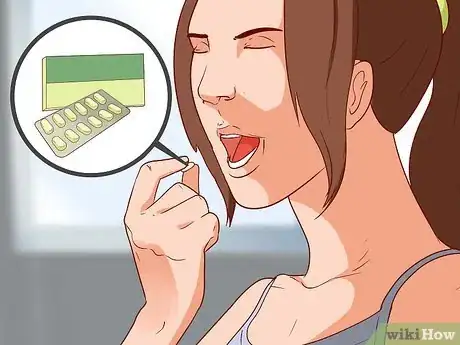

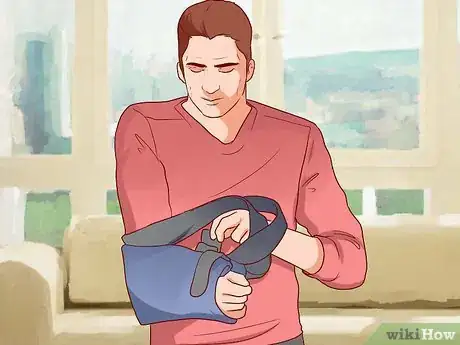







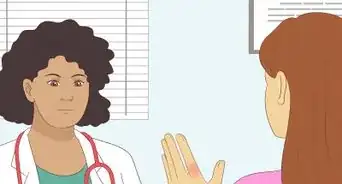

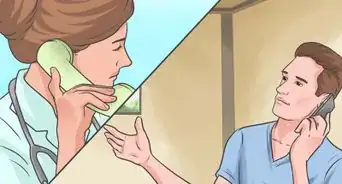
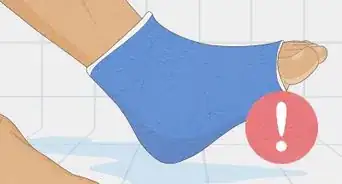

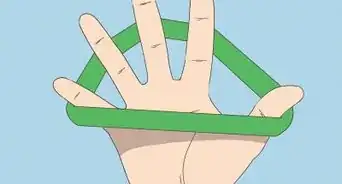

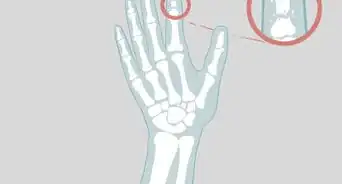

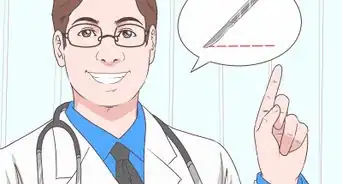










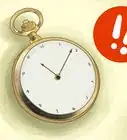

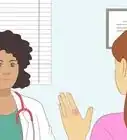



































Medical Disclaimer
The content of this article is not intended to be a substitute for professional medical advice, examination, diagnosis, or treatment. You should always contact your doctor or other qualified healthcare professional before starting, changing, or stopping any kind of health treatment.
Read More...